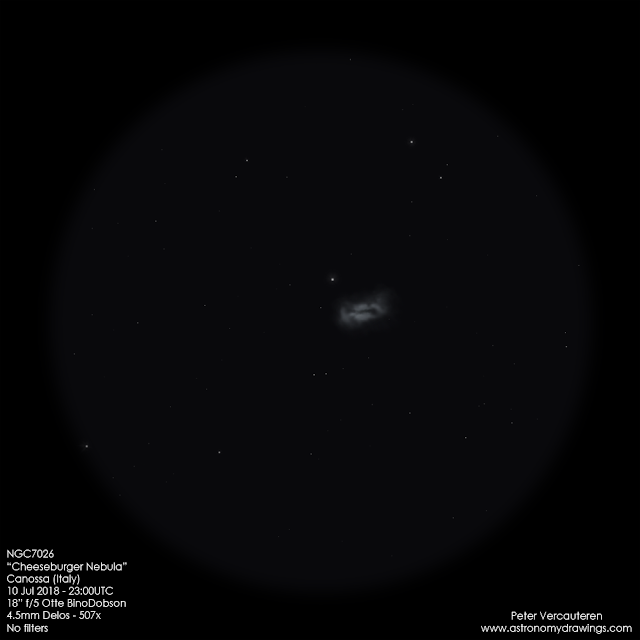Here we go again... Once more a sketch that'll rank high on the least-popular list because, let's be honest, it almost looks like a blank sheet, apart from a couple of small stray stars. Yes, I know that this won't be the easiest or most spectacular sketch and that Blogger doesn't allow you to open the image real size, but please give it a try.
No, don't look at the sort of framework of brighter stars that seem to form two parallel lines from top to bottom because they lie a lot closer to us than the object I'm trying to tell you about here. Look at the two stars at the centre and then just below them. Look very carefully; turn off the lights if you have to. Don't you see a small group of incredibly faint stars appearing? I've tried to represent them just as faint as they were for me at the telescope and also I had to glance for a bit before these stars suddenly revealed themselves in the dark grey mist.
Berkeley 81 is a remote cluster that lies 10,000 light-years away in the direction of our Milky Way's core. With all the dense clouds of dust and gas in the area, it's not surprising that this cluster appears so faint because a lot of its light's being absorbed. It's like looking at a distant light on a foggy night. The cluster's intriguing because of its position and its high age, estimated between 750 million and 1 billion years. Usually galactic star clusters get torn apart quite soon by our Milky Way's gravity, especially when they're so close to the core. Yet, this one's still resisting. Perhaps because it's lying somewhat above the plane of our galaxy? Or because it's not an insignificant cluster, containing about 1,500 solar masses?
Oh, how I just love these off the beaten track objects... :-)










